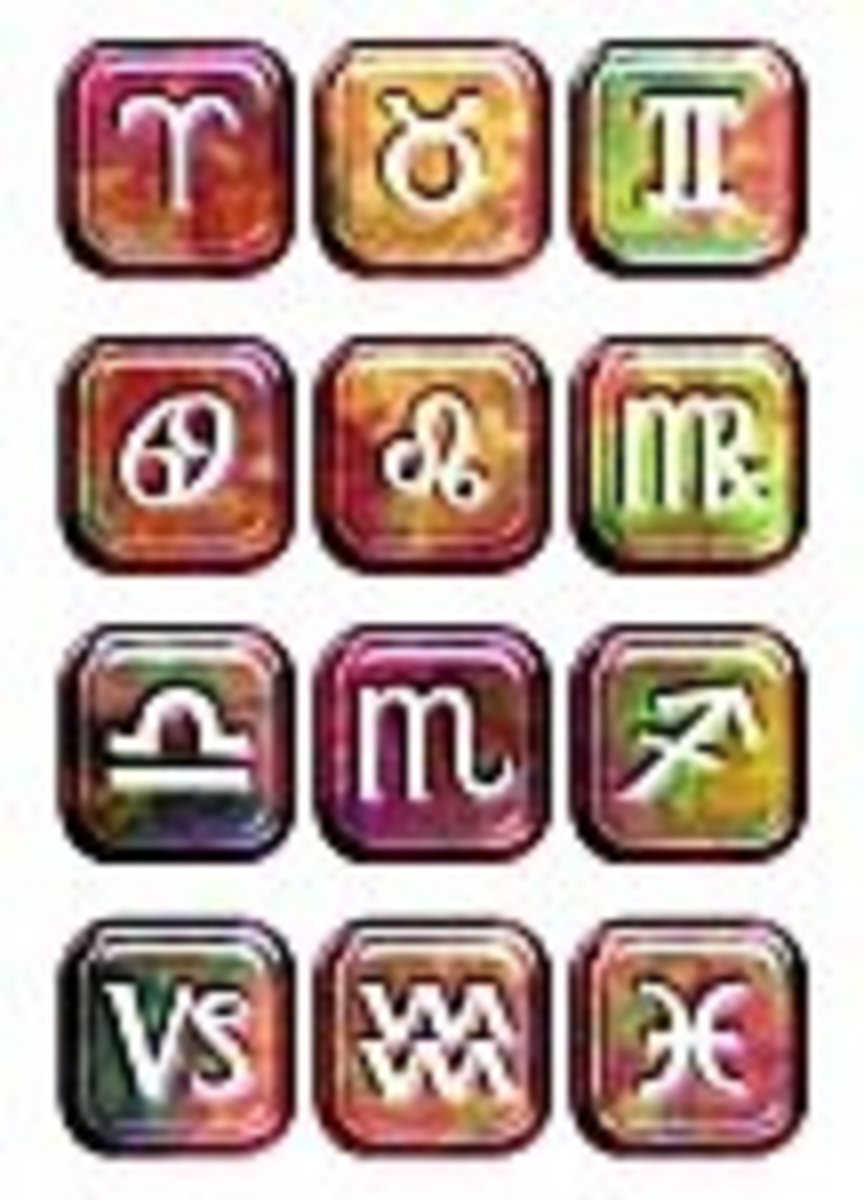Astrology: Established Scientific Proofs
The ancients believed in the link between the heavans and man and built observatories around the world



Yes: There is a real Astrological Influence
For many people, scientific proof of astrological influence is the most interesting area of investigation. Others will say that it is pure bunk. But the astrological effect being discussed here is one based on very real interactions involving forces like magnetism, gravity and the n-bodied problem and not the stuff of pulp writing in the mass media. It is the area that has inspired still ongoing research. The concepts previously mentioned do not exhaust all possibilities. Scientific proof of the astrological factor comes from several sources: Among these are,
* The work of Michel Gauquelin.
* Research into the so-called cosmobiology or astrobiology
* Engineering developments concerning electromagnetic interaction of man and machine.
* Findings of how the heavens help in shaping evolution.
* Quantum physics.
* The findings of the French particle physicist Alain Aspect and subsequent verification by others.
For so many years we have been limited by the linear approach to experimentation, calculation and understanding, despite the evidence of the non-linear quality of the dynamic cosmos and everything we experience from nature on a daily basis from nature. The first thing to consider is statistics. Here we look at a wide number of variables (inputs from the cosmos) that converge on individuals in different ways in different times and places. Michel Gauquelin initially set out to disprove astrology and ended up confirming it. He gathered statistics about some 200,000 well known people from around the world but primarily in France where he was doing his research. He found four especially sensitive points in the heavens: ten degrees above the east point of the ascendant, ten degrees west of zenith; ten degrees below the descendant, and ten degrees past nadir. Further, he discovered that the traditional symbolism of the planets was accurate. Mars, for instance, was prominent in the horoscopes of police and the military. Jupiter was prominent in those of actors, politicians, religious and other leaders. Saturn was prominent for scientists, surgeons and dentists. Mercury was prominent for journalists and writers. The moon figured strongly in the position for poets, artists and other sensitive types. Curiously, he did little study of Venus and the Sun. No reasons were mentioned in his work. Perhaps he did not have the time to finish his research. Nor was there any statistical research for the trans-Saturnine planets. What Gauquelin determined that the influence of the planets on professionals was greater than the statistical average. Had planetary influence been nonexistent, and then the statistical findings would show no distinct patterning. Others are carrying on Gauquelin's researches and increasing the database that supports Gauquelin's findings.
Cosmo biology frequently called astrobiology tells us that the moon shapes the course of evolution and the basic rhythms of life processes. Cosmo biologists are quick to point out the now cliché "cicadian rhythm" named after the insect that got the whole investigation going. Since then lunar influences has documented in books and documentaries with respect to such things as the grunion, coastal intertidal bivalves and the Galapagos sea turtles. New species are being discovered that respond directly to the influence of the moon. Among the supporters of the lunar effect on evolution is Charles Darwin. Since then, many others have jumped on the bandwagon to suggest how life might not have evolved if the moon did not exist. They cite the fact that at one time the moon was much closer to the Earth and the tidal zone was much greater than even the massive rip tides of the Bay of Fundy today. Great tides literally stirred things up, placing the nutrients so much needed by early life on landforms that would not have received them if there were no moon. Some species would have become trapped in land locked seas and lakes, forced to adapt to the new conditions. Indeed, it is thought that life evolved to live free of the turbulent oceans of the distant past primarily due to the fact of being deposited far from the sea as tides retreated. In addition, comet and asteroid impacts helped to shape early evolution, but this is another story. The constant driver of evolution on our planet has been, and continues to be, the moon. It accounts for the long stretches of gradual adaptation to changing environments. Comets and asteroids impacting on Earth contributed to sudden and rapid changes where species died off and new ones evolved "almost overnight". Cosmo biologists have studied the lunar influence at length and have found that life rhythms follow a pattern that is matched, not to the 24 hour diurnal cycle, but the 25 hour lunar one. This is exactly the time required for a particular location on Earth to line up in the same angular relation to the moon in the sky, like being overhead over during that period. During the 25-hour period, the tides rise and fall twice. The sun influences a subtler tide. A "spring tide" is the result of the two influences occurring together. Further, the moon cuts through the Earth's magnetic tail, perturbing the magnetic field of the Earth once in a lunar month, around the time of the full moon. It is thought that the full moon effect may be caused by this added turbulence to the Earth's magnetic field.
A recent interesting development is the field of mind and machine interaction investigating the interfacing of machine and man through nothing more than being receptive to brain signals and visa versa. The military has exploited this new understanding in the form of the H.A.A.R.P. (High-frequency Active Auroral Research Program) as a means of doing a number of things including remote crowd control. We already know through the research of Maxwell, Faraday, Tesla and others how magnetism and electrical fields interact. There is such a thing as a biomagnetic field, an electromagnetic sense, which is thought as being used by migrating birds to find their way in total darkness and thick fog. There are other clues like using the stars as a guide, but on overcast nights the birds can still find their way to their destinations with unerring accuracy, unless a major solar flare deflects the Earth's magnetic field. When that occurs, the migrating birds can become lost. Human beings also have a biomagnetic field that is subject to all external influences, both man made and natural.
Of all the recent discoveries, the asteroid and comet link to accelerated evolution is one of the more interesting facets of contemporary research. Through the aegis of tremendous upheaval, many toxins are generated as dust is kicked up and bio mass is burned on a large scale. We have a contemporary example of the powers of pyro-toxins in the damage done by pollution and tobacco smoke. Scale this up a few thousand folds and one can see the scenario of mass mutations in a relatively short time period. So it is during times of upheaval and chaos after a strike from the heavens by an impacting asteroid. One is reminded of the writings of Velikovsky, who, unfortunately, is still a pariah within the scientific community. Today, very respectable people are talking about Biblical scale catastrophes without the risk of being ostracized.
The level of the quantum world is the foundation upon which all is constructed in the universe. There is a different set of laws operating at our level of perception than in the quantum. Measurements such as position and momentum are ruled by the exclusion principle, generating uncertainty in this domain of stochastic processes. At this level, events take on either the characteristics of waves or particles in the so-called particle wave duality. The sub atomic is a region where things are best understood in the form of probabilities. The quantum level is also a region where anything we do to merely observe this reality alters the observed object. We are left with the uncertainty of what it is we are really dealing with and the fact that what we really observe is the change we have induced in the thing being studied from one unknown state into another. The important thing is to realize that the very act of looking into the quantum level of things changes the observed object. In a very real way, we are changed in the process of the investigation. Yet, despite all of this, we can understand the process by observing from many perspectives. But how does this become a support of the astrological influence? The entire cosmos from the quantum level to the whole universe itself, works on a feedback process where each and every part affects all the rest. We know that probing the quantum changes the things being observed. Similarly, we are changed by the myriad of influences all around us at all levels. The cosmos is a nonlinear and interconnected complex place where an event occurring in one place affects all other regions. Part of our quantum view tells us that there are four interconnected fundamental forces that link everything together.
We arrive at an experiment performed by Alain Aspect, et al, and others who have subsequently duplicated his findings in the study of quantum mechanics. The experiment consisted of polarizing photons that were set up to travel in two different directions to determine if there was an interconnection that acted faster than the speed of light. One of the photons was polarized in a certain direction, and the other was checked instantaneously to see the direction in which it was polarized. The experiment was done repeatedly and the result checked each time. Traditional ideas hold that one photon cannot interact over large distances without encountering the limit of the speed of light. Yet, whatever was done to one was reflected in the other at a speed that was instantaneous in every instance. In itself, this experiment offers an explanation for the single and double slit experiments involving single photons that have puzzled physicists for a long time. The other result is that there is an immediate result between events in the quantum level that can account for such things as quantum jumping and quantum tunnelling. It can also suggest reasons for astrological influence at the quantum level. At our level of reality, actions and reactions are not necessarily instantaneous. We deal with things like momentum, friction, and the speed of light limitation in our everyday experience. The two worlds have their own sets of laws, which apply to them and the two works together in a way that is not yet well understood.





